Context
I have a multi-module architecture, with multiple feature modules, it kinda looks like this:
I have multiple feature modules that depend on a :core_library library module that contains all the common dependencies (Retrofit, Room, etc.) and then different feature modules for each of the different app flows. Finally, the :app application module ties everything together.
If you want to navigate between Activities in feature modules that don't know anything about each other I use an AppNavigator interface:
interface AppNavigator {
fun provideActivityFromFeatureModuleA(context: Context): Intent
}
Then in the :app module Application class I implement this interface, and since the :app module ties everything together it knows each of the activities within each of the feature modules:
class MyApp : Application(), AppNavigator {
...
override fun provideActivityFromFeatureModuleA(context: Context): Intent {
return Intent(context, ActivityFromA::class.java)
}
...
}
This AppNavigator component lives in a Dagger module up in :core_library and it can be injected in any feature module.
I have this :feature_login feature module that is for when the user creates a new account and has to go through the onboarding flow, things like inviting friends to join the app, checking for POST_NOTIFICATION permissions, adding any more details to its account, etc.
Each of the :feature_modules has one Activity and many Fragments I have a navigation graph to navigate between fragments.
The problem
The :feature_login navigation graph kinda looks like this:
The thing is that I need to reuse many of these Fragments across different parts of the App, more specifically, these Fragments
For example; When I open the app and land on the main screen, I check for POST_NOTIFICATION permissions, and if these haven't been granted, I want to prompt the PostNotificationFragment that checks for that and presents the user with a UI. The SelectSquadronFragment + SelectNumberFragment should be prompted if the user wants to change them from the Settings screen. When doing something I want to prompt the user with the InviteFriendsFragment.
The problem is that I don't know how to reuse these Fragments independently without having them navigate through the rest of the flow
What I have tried so far
Subgraphs don't really fix the issue. I can use the
AppNavigatorto either provide the hosting Activity I have in:feature_loginor each individual Fragment, but the issue is still there. If the user opensSelectSquadronFragment+SelectNumberFragmentfrom Settings, I don't want the user to have to go throughFinishFragmentafterward.Extracting the navigation through an interface up to the Activity. Each Fragment in that navigation graph navigates through
NavDirections. When I want to navigate fromMedictFragmenttoInviteFriendsFragmentI useMedicFragmentDirections. I was thinking about having theActivityprovide theseNavDirections, that way I could create customized Activities with the navigation routes that I want, but honestly, I would prefer to go with something that isn't that rocket science.
Please let me know if you need me to give you more info. Any feedback is welcome.
Example
Let me give you a precise example of what I'm struggling with here. Let's use something simple. Let's take the ChooseRoleFragment as an example.
This ChooseRoleFragment is a simple UI that shows three buttons with three roles ("Police", "Medic", and "Fireman") during the login flow, when the user clicks on one of these three buttons, he is taken to either the PoliceFragment, FiremanFragment or MedicFragment. This is in the login flow.
Now, I need to re-use this ChooseRoleFragment in the "Settings" section of the app. The only difference is that when I use it there, I don't want it to navigate to the FiremanFragment, MedicFragment or PoliceFragment, I just want it to go back to the "Settings" screen. The "Settings" screen is on a completely different feature module that doesn't know anything about :feature_login
To be more clear, the ChooseRoleFragment navigate to either the PoliceFragment, the FiremanFragment or the MedicFragment through a navigation graph. That means that in the ChooseRoleFragment once I click on each of the options I have something like this:
class ChooseRoleFragment : Fragment() {
//...
override fun onViewCreated(view: View, savedInstanceState: Bundle?) {
super.onViewCreated(view, savedInstanceState)
bindings.policeBtn.setOnClickListener {
findNavController().navigate(ChooseRoleFragmentDirections.actionChooseRoleFragmentToPoliceFragment())
}
bindings.medicBtn.setOnClickListener {
findNavController().navigate(ChooseRoleFragmentDirections.actionChooseRoleFragmentToMedicFragment())
}
bindings.firemanBtn.setOnClickListener {
findNavController().navigate(ChooseRoleFragmentDirections.actionChooseRoleFragmentToFiremanFragment())
}
}
}
So, this works perfectly for the login flow, but it won't do what I want for the "Settings" screen. So what I'm trying to figure out is, should I extract those NavDirections somewhere? That way when I want to re-use this Fragment in the "Settings" screen I can just override the NavDirections and have it navigate somewhere else.


